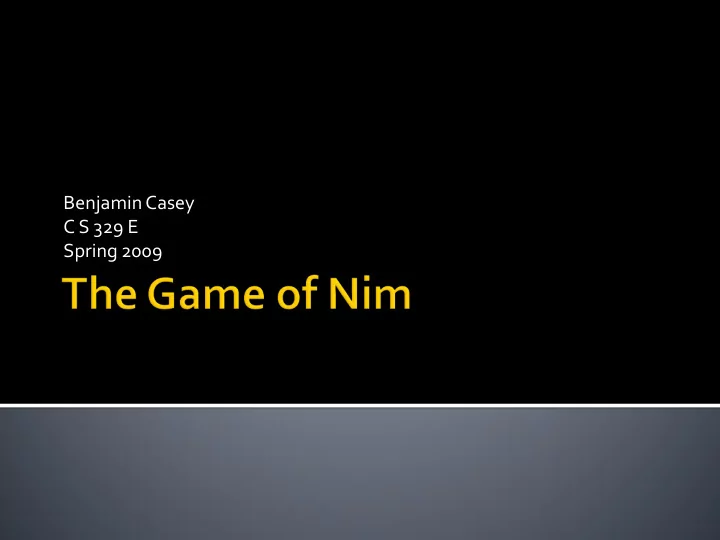

Benjamin Casey C S 329 E Spring 2009
The setup: 2 players take turns picking circles from each row (we call the rows “heaps”). At each turn, at least 1 circle has to be picked. A player cannot pick from more than 1 row.
Variants played since ancient times resemblance to Chinese “picking stones” Current name and theory developed by C. Bouton of Harvard in 1901 name taken from German nimm meaning “take”
http://en.wikipedia.org/wiki/Nimrod_(computing)
Player 1 is Player 1 takes 2 forced to take from heap 2 the last one Player 2 takes 1 Player 2 wins! from heap 1
Theory completely solved for any number of heaps/objects by C. Bouton Based upon binary digital sum of heap sizes also known as “ nim- sum”
▪ Write the size of each heap in binary ▪ Add the sizes without carrying ▪ Simple rule of thumb: Column w/ even # of 1’s = 0 Column w/ odd # of 1’s = 1
1 0 1 1 = 0 1 1 0 1 0 = 0 0
Winning strategy: finish each move such that the nim-sum is zero If your partner gives you a non-zero nim-sum, it is always possible for you to make it into a zero nim- sum. If your partner gives you a zero nim-sum, it is never possible for you to keep it at a zero nim- sum. You will have to change it into a non-zero nim-sum.
010 010 011 011 001 100 = 000 = 101
When the next move will result in heaps of size 1. Normal play: Move such that an even number of heaps of size 1 remain. Here, you will lose with Normal play! Misère play: Move such that an odd number of heaps of size 1 remain.
Recommend
More recommend